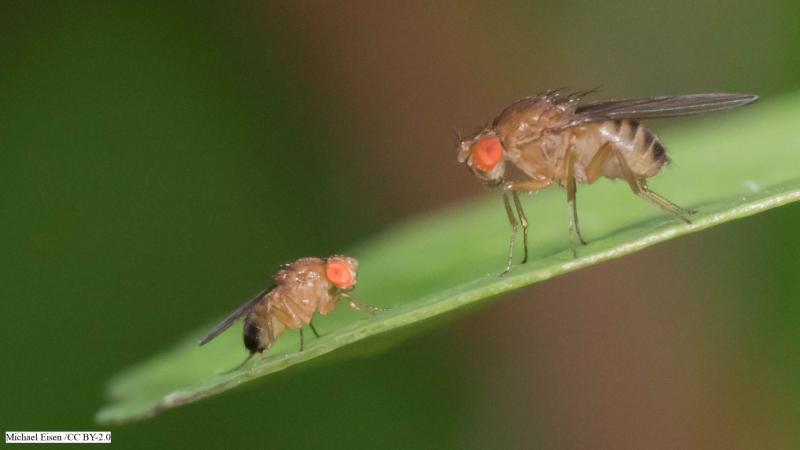
It was a little over a year ago. The two, in their twenties, were scouting the streets of Pune in the hunt for tubes and casings of different sizes. The idea? To construct an experimental setup to study fruit flies, aka Drosophila—the tiny little flies that appear out of nowhere to buzz around cut fruits and vegetables. Their objective—to figure out if a fruit fly’s sex, in association with other behavioural attributes, contributed to its inclination to disperse.
In a recent study, a team of researchers from the Indian Institute of Science Education and Research (IISER), Pune, have reported that environment and evolution can influence the ‘dispersal syndrome’ in fruit flies. Dispersal syndrome is, simply put, all traits of an organism that are associated with its movement. Fascinated by this aspect of biology, researchers, led by Prof. Sutirth Dey from IISER Pune, have been studying dispersal syndrome in fruit flies. Their latest study was published in the journal Philosophical Transactions of The Royal Society B and was supported by the Department of Science and Technology, Government of India.
Dispersal syndrome provides clues about how an organism functions in a given habitat, which in turn answers much larger questions in the context of ecology and evolution, such as how wildlife survives in a world of climate change and habitat losses.
“The insights gained from such studies will not only have academic interest but will also appeal to practitioners of conservation and population management”, explains Mr. Abhishek Mishra, a research scholar from IISER Pune and an author of the study.
In their study, the researchers constructed a setup—long transparent tube connecting two containers on each end that could allow identification of the dispersers among the flies. “We still remember looking for plastic bottles and pipes of varying dimensions. Subsequently, cutting those bottles and fixing them with funnels were no less fun than performing the actual experiment”, laughs Sudipta Tung, also a research associate scholar at IISER Pune and an author of the study.
The researchers used this setup to breed flies for over 70 generations to study the dispersal syndrome over short and long timescales. The researchers built multiple such structures in the lab and then set out on the exhausting task of observing the flies, in batches, for dispersal. The experiments involved observations of sex-based disparity in the dispersal of Drosophila under low and normal nutrition. The scientists used low nutrition as a representation of a stressful situation that the flies could experience in their natural habitat. They assessed the flies’ body mass, resistance to drying up or desiccation, and even their exploratory tendencies—all as collective determinants of the complex composite function that is studied as ‘dispersal syndrome’.
The experiments led to a series of interesting observations. For instance, dispersive females were found to be more resistant to desiccation than their non-dispersive counterparts. However, no such trend was observed for males. “The most exciting result is that males and females can differ substantially in their dispersal syndromes and that these sex-specific differences can change with a change in the environment or with evolution,” says Sudipta. “Also, the dispersers had a higher desiccation resistance than non-dispersers when measured within a single generation, but after evolution (studied over 70 generations), the dispersers had evolved a lower desiccation resistance than non-dispersers”, chips in Abhishek.
These results enthuse evolutionary biologists to understand how and why animals disperse and are relevant in the context of deteriorating environments. In today’s world of deforestation, urbanisation, climate change, and worse, animals survive by resorting to dispersal in the hunt of a habitable space. Although one cannot directly extrapolate the study with Drosophila to endangered species such as the big cats, it does provide ecological clues about sex and dispersal syndromes that were hitherto unknown, which hold promise for a better tomorrow.

![Inset: image of Snowflake yeast. Credit: Narayanasamy N, Bingham E, Fadero T, Ozan Bozdag G, Ratcliff WC, Yunker P, Thutupalli S. Metabolically-driven flows enable exponential growth in macroscopic multicellular yeast. bioRxiv [Preprint]. 2024 Jun 22:2024.06.19.599734. doi: 10.1101/2024.06.19.599734. PMID: 38948761; PMCID: PMC11213004. Yeast](/sites/researchmatters/files/styles/400px_wide/public/Snowfalke%20Yeast.jpg?itok=YZoahBjb)




